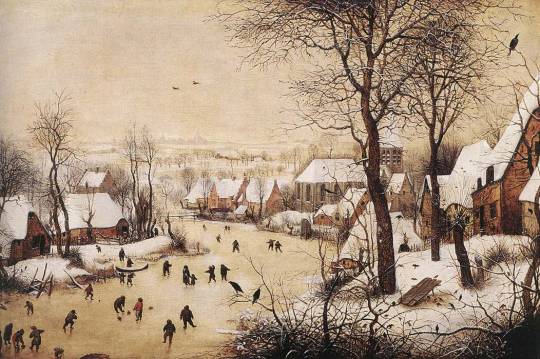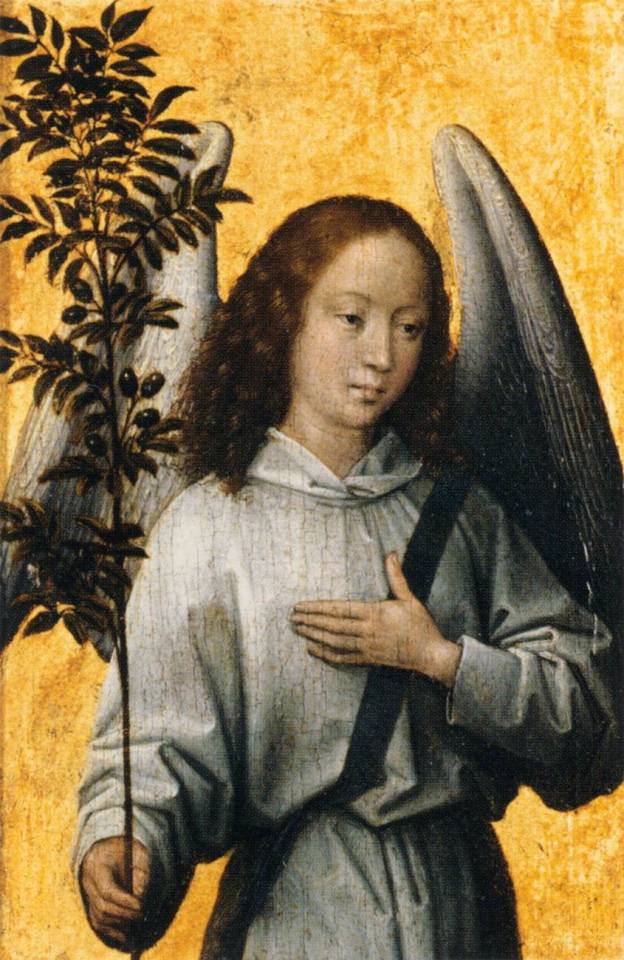#NorthernRenaissance
Link
🎨 Jan van Eyck is considered one of the most significant painters of the Northern Renaissance. His works are admired for their realism, attention to detail, and use of light. Among his many masterpieces, one stands out as his top achievement. 🏰 The painting, created in 1434, is known as "The Arnolfini Portrait." It depicts a wealthy merchant and his wife standing in their home, surrounded by luxurious items. The painting is famous for its intricate details, such as the reflection of the couple in the mirror and the intricate patterns on the carpet. 👀 The painting has been the subject of much analysis and interpretation, with many scholars debating the meaning behind the various symbols and objects in the painting. Regardless of its meaning, "The Arnolfini Portrait" remains a stunning example of van Eyck's mastery of painting technique and his ability to capture the essence of his subjects.1. The Life and Works of Jan van Eyck: A Brief OverviewJan van Eyck was a Flemish painter who lived in the 15th century. He is considered one of the most significant artists of the Northern Renaissance. 🎨 Van Eyck's works are known for their incredible detail and realism. His most famous work is the Ghent Altarpiece, which is considered a masterpiece of European art. 🌟 Van Eyck was also known for his use of oil paints, which allowed him to create incredibly detailed and lifelike images. His works often featured religious themes and were commissioned by wealthy patrons. 💰 In addition to his painting, van Eyck was also a diplomat and courtier. He worked for the Duke of Burgundy and traveled extensively throughout Europe. 🌍 Van Eyck's influence on art cannot be overstated. His use of perspective, light, and color paved the way for future artists. His legacy lives on today through his incredible works of art. 👨🎨2. The Ghent Altarpiece: Jan van Eyck's Most Celebrated MasterpieceThe Ghent Altarpiece is a masterpiece painted by Jan van Eyck in the 15th century. It is considered one of the most significant works of art in the world. The altarpiece is a polyptych, which means it consists of multiple panels. It has 12 panels in total, with eight of them being visible at any given time. The Ghent Altarpiece is known for its intricate details and vivid colors. It depicts various religious scenes, including the Annunciation and the Adoration of the Mystic Lamb. The painting was stolen multiple times throughout history and was even taken by the Nazis during World War II. It was eventually returned to its rightful owners and is now on display at the Saint Bavo Cathedral in Ghent, Belgium. Jan van Eyck's use of oil paint revolutionized the art world and is evident in the Ghent Altarpiece. The painting's realism and attention to detail are unparalleled, making it a true masterpiece. 🎨👨🎨🌟3. The Iconography of the Ghent Altarpiece: Decoding van Eyck's Symbols🎨 The Ghent Altarpiece is a masterpiece of Flemish art. Jan van Eyck, one of the most famous painters of the 15th century, created this work of art for the Saint Bavo Cathedral in Ghent, Belgium. 🔍 The Ghent Altarpiece is full of symbols and hidden meanings. Van Eyck used iconography to convey religious messages to the viewer. Understanding the symbols is key to interpreting the painting's meaning. 👀 The central panel of the Ghent Altarpiece depicts the Adoration of the Mystic Lamb. The lamb is a symbol of Christ, and the surrounding figures represent the saints and the faithful. 🕊️ The dove, which appears above the lamb, is a symbol of the Holy Spirit. The dove's presence emphasizes the importance of the Holy Trinity in Christian belief. 🌹 The red rose, which appears in the lower left corner of the painting, is a symbol of the Virgin Mary. The rose represents her purity and her role as the mother of Christ. 🔑 The key held by Saint Peter, in the lower right corner of the painting, is a symbol of his role as the gatekeeper of heaven. The key represents his power to open or close the gates of heaven. 🌎 The globe held by God the Father, at the top of the painting, represents his power and control over the world. The globe is a symbol of his omnipotence. 👑 The crown held by the Virgin Mary, in the lower left corner of the painting, is a symbol of her status as the Queen of Heaven. The crown represents her power and authority. 💡 Decoding the symbols in the Ghent Altarpiece is a fascinating journey into the world of medieval art and religious belief. Van Eyck's use of iconography is a testament to his skill as a painter and his devotion to his faith.4. The Technical Innovations of Jan van Eyck: A Closer Look at the Ghent AltarpieceJan van Eyck's Ghent Altarpiece is a masterpiece of technical innovation. 👀 The altarpiece features intricate details and lifelike figures, made possible by van Eyck's use of oil paint and glazes. 🎨 The artist also utilized a technique called "wet-on-wet" painting, where layers of paint are applied before the previous layer dries. 🔍 The Ghent Altarpiece also showcases van Eyck's use of perspective, creating a sense of depth and realism. 🌞 The altarpiece's luminosity is achieved through the use of translucent glazes, which allow light to pass through the layers of paint. 👨👩👧👦 The figures in the altarpiece are depicted with individualized features and expressions, showing van Eyck's attention to detail. 🎨 The use of symbolism is also prominent in the Ghent Altarpiece, with various objects and colors representing religious themes. 🕰️ The technical innovations of Jan van Eyck in the Ghent Altarpiece set a new standard for realism and detail in art, influencing future generations of artists.5. The Legacy of Jan van Eyck: How the Ghent Altarpiece Shaped Art HistoryThe Ghent Altarpiece, painted by Jan van Eyck in the 15th century, is a masterpiece of art history. This work has influenced and shaped the art world for centuries. 🎨 The use of oil paint and the intricate details in the painting revolutionized the art world. 🌍 The Ghent Altarpiece has been a cultural icon for centuries, with its influence reaching far beyond the art world. 👨🎨 Jan van Eyck's work has inspired countless artists, including the likes of Raphael and Leonardo da Vinci. 💰 The Ghent Altarpiece has also been the subject of theft and controversy, adding to its mystique and allure. 🏛️ The painting has been housed in various locations throughout history, including a Nazi stronghold during World War II. 🔍 The Ghent Altarpiece continues to be studied and admired by art historians and enthusiasts alike, cementing its place in art history. In conclusion, Jan van Eyck's "The Arnolfini Portrait" is a true masterpiece of the Northern Renaissance. 🎨 Its intricate details, use of light and shadow, and symbolism make it a fascinating work of art. 🌟 The painting has inspired countless artists and continues to captivate viewers to this day. 👀 Its enduring popularity is a testament to van Eyck's skill and creativity. 🙌 If you have the opportunity to see "The Arnolfini Portrait" in person, don't miss it! 🤩 It's a truly remarkable piece that will leave you in awe of van Eyck's talent. 💫 https://van-squad.co.uk/jan-van-eycks-top-masterpiece/?_unique_id=6489137076a0d
#Uncategorised#Flemishpainting#JanvanEyck#NorthernRenaissance#Renaissanceart#TheGhentAltarpiece#aiomatic_0
0 notes
Photo

Since I got a modest raise recently, I celebrated by buying something that I didn’t necessarily need but just made me happy. This little friend, lovingly dubbed “sushi frog”, is from a detail in one of Hieronymus Bosch’s famously chaotic paintings, “The Hermit Saints.” Ever since I saw the creature in the painting I thought it was adorable - what an absolute little guy! Don’t you want him to just sit in the palm of your hand? At least now I can wear him on my bag and enjoy his cuteness always. That innate feminine urge to have a familiar. A magical creature you can have as a constant companion, like the daemons in His Dark Materials. Anyhow, check out greerstothers.com for these and other very cool pins! #pins #hieronymusbosch #frog #sushifrog #boschian #arthistory #artgeek #northernrenaissance #frogs #pinstagram #selfie #greerstothers https://www.instagram.com/p/CjIkyLtOkHU/?igshid=NGJjMDIxMWI=
#pins#hieronymusbosch#frog#sushifrog#boschian#arthistory#artgeek#northernrenaissance#frogs#pinstagram#selfie#greerstothers
1 note
·
View note
Photo

Portrait of Henry VIII, 1537, Hans Holbein the Younger
Medium: oil,canvas
11K notes
·
View notes
Photo

Winter Landscape with Skaters and a Bird Trap, 1565, Pieter Bruegel the Elder
Medium: oil,panel
365 notes
·
View notes
Photo

Madonna and Child. Left Panel of Diptych de Melun, 1450, Jean Fouquet
Medium: wood,tempera
261 notes
·
View notes
Photo

The Annunciation, 1440, Jan van Eyck
Medium: oil,wood
181 notes
·
View notes
Photo

Angel Holding an Olive Branch, 1480, Hans Memling
Medium: oil,panel
155 notes
·
View notes
Photo

Portrait of Antoine, bastard of Burgundy, 1460, Rogier Van Der Weyden
Medium: oil,panel
158 notes
·
View notes
Photo

The Virgin Illuminated (detail from the Concert of Angels from the Isenheim Altarpiece), 1516, Matthias Grunewald
Medium: oil,panel
219 notes
·
View notes
Photo

Salome, 1530, Lucas Cranach the Elder
Medium: oil,wood
154 notes
·
View notes
Photo

Hell, copy after Hiernonymus Bosch, 1935, M.C. Escher
82 notes
·
View notes
Text

Dieric Bouts the Elder
Hell, 1450
Lillie Palace of Fine Arts, France
Oil on panel
115x69.5 cm
#art#art gallery#artwork#creepy#dark art#digital museum#fineart#grotesque#horror#supernatural#occult#northernrenaissance#german renaissance#renaissance#flemishrenaissance#diericbouts#1400s#1450#painting#oilpainting#oilonpanel#macabre
1K notes
·
View notes
Photo

Christ Giving His Blessing, 1478, Hans Memling
Medium: oil,oak
186 notes
·
View notes
Photo

Annunciation, 1467, Hans Memling
Medium: oil,panel
149 notes
·
View notes
Photo

Mary holding the Christ child, 1455, Jean Fouquet
187 notes
·
View notes
Photo

Saint George and the Dragon, 1435, Rogier Van Der Weyden
149 notes
·
View notes